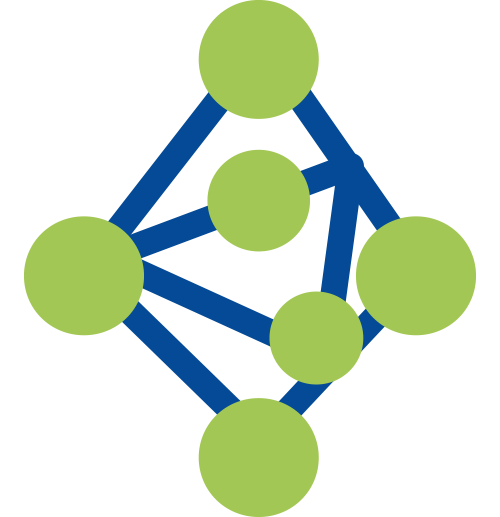Array-based oligonucleotide pool synthesis has fundamentally transformed CRISPR functional genomics from resource-intensive individual clone assembly into scalable, high-throughput library construction workflows. Modern oligo pool platforms enable parallel synthesis of tens of thousands to millions of unique sequences in single production runs, providing the foundation for comprehensive genome-wide and focused CRISPR screening applications. This technical implementation guide addresses the complete workflow from computational sgRNA design through experimental validation, with particular emphasis on synthesis quality specifications, library complexity preservation, and NGS-based quality control protocols essential for generating publication-quality screening data.
Computational sgRNA Design: Establishing Library Quality Foundations
Target Identification and Genomic Context Selection
Effective CRISPR library construction initiates with systematic identification of target genes and strategic prioritization of genomic regions for sgRNA design. For knockout screening applications, guides targeting 5' conserved exons within the first 50% of coding sequences demonstrate superior functional outcomes compared to 3' untranslated region targeting, with median editing efficiencies exceeding 70% in optimized libraries. Transcriptional modulation libraries require alternative targeting strategies, positioning guides within 200 base pairs upstream of transcriptional start sites for activation applications or within gene body regions for interference-based repression.
Sequence-Level Design Parameters
Each guide RNA requires a 20-nucleotide targeting sequence positioned immediately 5' to the protospacer adjacent motif (PAM), with the canonical NGG PAM essential for Streptococcus pyogenes Cas9 recognition. Computational selection criteria encompass four critical parameters: minimization of off-target activity through genome-wide specificity analysis, maximization of on-target cleavage efficiency using predictive algorithms, avoidance of homopolymer stretches exceeding four consecutive identical nucleotides, and GC content optimization within the 40-60% range.
Recent mechanistic studies have revealed position-specific sequence preferences that significantly influence editing outcomes. GC content exceeding 56% in the PAM-proximal seed region (positions 1-12) impairs Cas9 conformational dynamics, reducing cleavage efficiency by up to 40%. Conversely, maintaining greater than 50% GC content in the PAM-distal region (positions 13-20) enhances RNA-DNA hybridization stability, improving functional outcomes by 1.8-fold in genome-wide applications. Guanine demonstrates superior performance over cytosine at position 20 adjacent to the PAM, while cytosine proves optimal at position 16 within the seed region.
sgRNA Design Specifications and Quality Thresholds
|
Design Parameter
|
Optimal Specification
|
Acceptable Range
|
Rationale
|
|
Guide sequence length
|
20 nucleotides
|
19-21 nt
|
Balances specificity and efficiency
|
|
Overall GC content
|
50%
|
40-60%
|
Maintains thermal stability
|
|
PAM-proximal GC (nt 1-12)
|
45-55%
|
40-56%
|
Prevents Cas9 misfolding
|
|
PAM-distal GC (nt 13-20)
|
55-65%
|
50-70%
|
Enhances RNA-DNA hybridization
|
|
Maximum homopolymer run
|
0 preferred
|
≤4 consecutive bases
|
Ensures synthesis fidelity
|
|
Off-target sites (genome-wide)
|
0 perfect matches
|
≤2 sites with ≥3 mismatches
|
Maintains screening specificity
|
|
Guides per gene (screening)
|
6 independent sgRNAs
|
4-8 guides per target
|
Reduces false-positive identification
|
|
Non-targeting controls
|
100-500 guides
|
≥1% of library size
|
Establishes baseline variation
|
Off-Target Prediction and Mitigation Strategies
Systematic off-target analysis requires computational evaluation of potential binding sites genome-wide, with particular attention to sequences containing fewer than three mismatches relative to the intended target. Multiple computational tools including Cas-OFFinder, CRISPOR, and MIT specificity scoring algorithms provide complementary prediction methodologies. Libraries should exclude guides predicted to have perfect-match off-target sites or those with high-confidence binding at two or more genomic locations with fewer than three mismatches. Incorporating 4-8 redundant guides per gene enables statistical identification of on-target effects while filtering spurious off-target phenotypes that fail to reproduce across independent guides targeting the same locus.
Oligonucleotide Pool Synthesis: Quality Specifications and Technical Requirements
Array-Based Synthesis Platform Capabilities
High-throughput oligo pool synthesis platforms employ array-based manufacturing technologies that enable parallel synthesis of thousands to millions of distinct sequences in single production batches. Dynegene's custom oligonucleotide pools synthesis platform provides synthesis capacity exceeding 4.35 million unique sequences per pool, with oligonucleotide lengths spanning 2-350 nucleotides suitable for diverse CRISPR library architectures.
Sequence Architecture and Functional Elements
Standard CRISPR library oligonucleotides incorporate multiple functional elements within 130-200 nucleotide synthesis products. The canonical architecture includes 5' and 3' primer binding sites (18-22 nucleotides each) flanking the variable sgRNA targeting sequence (20 nucleotides), with optional barcode sequences (10-20 nucleotides) enabling unique construct identification. Restriction enzyme recognition sites strategically positioned at oligonucleotide termini facilitate directional cloning into expression vectors following PCR amplification and digestion.
Oligonucleotide pool specifications for CRISPR applications require elimination of internal restriction sites that interfere with cloning workflows. Computational screening identifies problematic motifs including EcoRI (GAATTC), BamHI (GGATCC), NotI (GCGGCCGC), BglII (AGATCT), and MfeI (CAATTG). Point mutation strategies introduce silent nucleotide substitutions that disrupt restriction recognition sequences while preserving guide RNA functionality. Priority should be assigned to wobble position modifications (third codon position) that maintain amino acid identity in coding sequence contexts.
Barcode Integration for Multiplexed Screening
DNA barcodes provide essential molecular tracking capabilities for multiplexed CRISPR screening applications, enabling unique identification of individual constructs throughout experimental workflows. Barcode design requires establishment of minimum Hamming distance specifications—the number of nucleotide positions differing between any pair of barcode sequences. Standard implementations employ 10-nucleotide barcodes with minimum 2-3 nucleotide Hamming distance, accommodating synthesis and sequencing error rates while maintaining unambiguous construct identification.
Advanced error-correction algorithms implement sophisticated decoding strategies that tolerate both substitution and insertion-deletion errors during computational demultiplexing. Systems specifying tolerance of up to 3 bases of mismatches or indels (within 23-base search sequences) enable robust barcode discrimination provided that designed sequences differ by 4 or more nucleotides. Orthogonal barcode sets meeting these criteria demonstrate perfect discrimination accuracy in validation experiments, ensuring faithful preservation of construct identity throughout molecular recording processes.
Cloning and Library Complexity Preservation Strategies
PCR Amplification Optimization
Library complexity preservation represents the paramount challenge in CRISPR library construction, as representation losses at any workflow stage compromise screening power and introduce systematic bias. Initial PCR amplification of synthesized oligo pools demands meticulous optimization to minimize differential amplification of library members exhibiting sequence-dependent variations in primer binding, GC content effects, or secondary structure formation. High-fidelity polymerases with error rates below 1×10^-6^ mutations per base per duplication (Q5, Phusion, or equivalent enzymes) prove essential for maintaining sequence accuracy across amplification cycles.
Cycle number optimization constitutes the critical parameter, with restriction to 15-20 total cycles minimizing amplification bias while generating sufficient material for downstream cloning. Stepwise experimental refinements have established generalizable workflows yielding uniform sgRNA representation, with optimized protocols achieving 90/10 skew ratios below 2.0. These metrics substantially outperform legacy methodologies exhibiting skew ratios exceeding 5.0, which necessitate 10-fold higher cellular coverage to compensate for poor representation.
Transformation and Propagation Protocols
Bacterial transformation represents the critical bottleneck where insufficient colony numbers result in stochastic dropout of low-abundance library members. Transformation protocols must achieve colony counts exceeding 100-fold the theoretical library size, with 500-1,000-fold coverage providing optimal representation uniformity. Electrocompetent cells prepared to specifications achieving ≥10^10^ colony-forming units per microgram plasmid DNA enable scaled transformations supporting library complexity requirements.
Multiple parallel transformations distributed across 4-8 electroporation cuvettes reduce electrical arcing risk while increasing aggregate transformation efficiency. Following transformation, immediate recovery in pre-warmed liquid media at 37°C for 60 minutes facilitates optimal cell viability prior to plating on large-format agar plates (25 cm × 25 cm dimensions). Incubation at 30°C for 20 hours rather than standard 37°C conditions reduces metabolic stress and improves colony uniformity.
Colony harvesting methodologies prove critical for library representation maintenance. Scraping entire transformation plate surfaces captures all library members, avoiding selective sampling bias inherent to individual colony picking approaches. Plasmid isolation utilizing midi-prep or maxi-prep scale extraction with endotoxin-removal buffers generates material suitable for viral packaging in mammalian cell systems.
Golden Gate Assembly for Combinatorial Libraries
Golden Gate Assembly (GGA) strategies enable construction of multiplexed gRNA libraries expressing multiple guides from single constructs. The methodology employs Type IIS restriction enzymes (Esp3I/BsaI) generating customizable 4-nucleotide overhangs that direct sequence-specific ligation. Combinatorial library construction proceeds through iterative GGA reactions, inserting sgRNA expression cassettes with tRNA processing sequences for polycistronic guide expression.
Overhang sequence design for multiplexed applications demands rigorous computational filtering to ensure ligation specificity. Selection criteria include: GC content 45-60% with melting temperature 60-65°C, secondary structure free energy less than -3 kcal/mol, absence of restriction enzyme recognition sites, minimum 5 mismatches compared to other sequences (with ≥1 mismatch within terminal 4 nucleotides), and duplex structure prediction free energy less than -15 kcal/mol. Application of these criteria enables design of thousands of combination-specific overhang sequences supporting large-scale multiplexed library construction.
Next-Generation Sequencing Quality Control and Validation
Coverage Depth and Uniformity Metrics
Comprehensive quality control protocols employ NGS to quantify library representation at multiple workflow stages. Sequencing depth requirements specify minimum 200-500-fold coverage per library member to enable statistical detection of rare dropout events and accurate quantification of abundance distributions. Deep sequencing analysis at post-transformation and post-viral-packaging stages identifies representation losses requiring protocol optimization.
Coverage uniformity analysis examines statistical distributions of sequencing reads across library members. Skew ratio calculations compare abundance at different distribution percentiles, with the 90/10 ratio (abundance of 90th percentile divided by 10th percentile) serving as the primary quality metric. Dynegene's CRISPR sgRNA library synthesis services implement stringent quality control protocols ensuring these uniformity standards.
Illumina Platform Considerations
Illumina sequencing platforms provide optimal performance for CRISPR library validation, though platform-specific technical considerations influence data quality. Two-color chemistry systems (NextSeq, NovaSeq) exhibit artifacts with polyguanine sequences, requiring either alternative platform selection or sequence design modifications incorporating interrupting nucleotides. Four-color systems (MiSeq, HiSeq) demonstrate superior performance with homopolymer-rich sequences common in sgRNA constructs.
Paired-end sequencing strategies (2×150 bp or 2×250 bp) enable discrimination between synthesis-introduced errors and sequencing artifacts through analysis of read overlap regions. Quality score filtering with minimum Phred Q30 thresholds (99.9% base call accuracy) ensures reliable construct identification and minimizes false-positive variant calling. Computational pipelines must implement sophisticated error-correction algorithms accommodating both substitution and indel errors while maintaining false-positive identification rates below 0.1%.
Functional Validation and Screening Implementation
Lentiviral Production and Transduction Optimization
Lentiviral packaging of validated plasmid libraries enables efficient delivery to target cell populations for functional screening. Production protocols employ HEK293T packaging cells transfected with library plasmids alongside viral packaging vectors (psPAX2 and pMD2.G or equivalent). Optimal transfection conditions utilize endotoxin-free plasmid preparations to minimize cellular toxicity and maximize viral titer.
Viral titer optimization targets concentrations exceeding 10^6^ transducing units per milliliter to enable efficient library transduction at controlled multiplicity of infection (MOI). Low MOI conditions (0.3-0.5) ensure single-copy integration per cell, maintaining one-to-one correspondence between cellular phenotype and integrated sgRNA identity. Cell coverage requirements specify minimum 300-500 cells per library member at transduction to provide statistical power for hit identification.
Hit Validation and Phenotype Confirmation
Following initial screening and computational hit identification, systematic validation confirms that perturbation of candidate genes confers the observed phenotype. Individual sgRNAs targeting top-ranking genes undergo cloning into arrayed formats for independent phenotypic assessment. Indel rate quantification through targeted NGS establishes genotype-phenotype relationships, with validated hits demonstrating correlation between editing efficiency and phenotypic strength.
Two-step PCR protocols enable multiplexed targeted sequencing of sgRNA cleavage sites. Custom primers positioned ≥50 bp from predicted cleavage sites facilitate detection of insertion-deletion alleles, with amplicons incorporating Illumina adapter sequences in secondary PCR reactions. Computational analysis pipelines quantify editing outcomes, comparing indel spectra between experimental and control conditions to confirm on-target activity.
Troubleshooting and Optimization Strategies
Addressing Amplification Bias
Amplification bias manifests as non-uniform library representation compromising screening sensitivity. Systematic identification requires comparison of pre- and post-amplification sequence distributions through deep sequencing. Optimization strategies include: PCR cycle reduction to 15-20 total cycles, high-fidelity polymerase selection (Q5, Phusion, or equivalent), magnesium concentration adjustment (1.5-3.0 mM range), primer concentration optimization (0.2-0.5 μM final), and annealing temperature fine-tuning (use calculated Tm minus 2-3°C).
GC-rich sequence amplification proves particularly challenging, with extreme GC content (>70% or <30%) exhibiting differential representation. Additives including betaine (1-2 M final concentration), DMSO (2-5% v/v), or proprietary GC enhancers improve amplification uniformity across diverse sequence compositions. Alternative polymerase formulations specifically optimized for GC-rich templates (KAPA HiFi, Phusion GC Buffer) provide complementary solutions.
Transformation Efficiency Optimization
Low transformation efficiency resulting in insufficient colony numbers represents the primary cause of library dropout. Optimization approaches encompass: electrocompetent cell preparation to specifications achieving ≥10^10^ CFU/μg, electroporation condition optimization (voltage 1700-2500V depending on cuvette gap), DNA concentration adjustment (0.1-1.0 ng/μL for plasmid libraries), salt removal through dialysis or buffer exchange prior to electroporation, and recovery time extension to 60-90 minutes in SOC medium at 37°C.
Multiple parallel transformations distributed across replicate reactions increase aggregate colony numbers while reducing individual reaction stress. Plating onto large-format agar plates (25×25 cm) or multiple standard plates (15 cm diameter) provides sufficient surface area for colony development without overcrowding. Temperature reduction to 30°C during overnight incubation improves colony uniformity and reduces selection bias favoring fast-growing transformants.
Integration with Advanced Screening Platforms
Arrayed Library Formats
While pooled screening methodologies dominate genome-wide applications, arrayed CRISPR libraries provide complementary advantages for focused investigations and high-content imaging applications. Arrayed formats maintain individual library members in separate wells throughout screening workflows, enabling direct phenotype-genotype associations without NGS deconvolution. Dynegene's variant library construction services support diverse experimental designs.
Arrayed library construction employs liquid handling automation for parallel cloning of individual sgRNAs into 96-well or 384-well plate formats. Custom computational pipelines coordinate oligonucleotide design, plate layout optimization, and barcode assignment for each array position. Integration with robotic liquid handlers enables high-throughput viral production and cell transduction in plate formats compatible with automated imaging systems.
Emerging Applications and Technical Innovations
Recent innovations expand CRISPR library applications beyond traditional knockout and activation screening. Base editing libraries employ cytosine or adenine base editors fused to catalytically impaired Cas9 variants, enabling targeted nucleotide conversion without double-strand break formation. Prime editing libraries incorporate reverse transcriptase functionality for programmable insertions, deletions, and all possible base-to-base conversions. These advanced modalities benefit from high-quality oligo pool synthesis providing the sequence diversity required for comprehensive mutagenesis applications.
Combinatorial screening with dual-gRNA libraries interrogates genetic interactions by expressing two guides per cell, enabling systematic pairwise knockout analysis. Multiplexed library architectures employ polycistronic tRNA-gRNA expression systems or tandem U6 promoter arrays to express 3-4 guides simultaneously. Construction of these complex libraries requires sophisticated oligo pool design incorporating multiple functional elements while maintaining synthesis fidelity.
Summary and Critical Success Factors
Successful CRISPR library construction using oligo pools requires integration of five critical technical capabilities:
1. Rigorous Computational sgRNA Design: Implementation of comprehensive design algorithms balancing on-target efficiency, off-target specificity, sequence composition constraints, and functional validation criteria establishes library quality foundations.
2. High-Quality Oligonucleotide Synthesis: Array-based synthesis platforms providing sequence accuracy >99% per base, synthesis capacity exceeding 100,000 unique sequences, and comprehensive quality control through NGS validation enable reliable library construction.
3. Optimized Cloning Workflows: Meticulous attention to PCR amplification conditions, transformation efficiency optimization, and systematic monitoring of representation through deep sequencing preserves library complexity throughout molecular biology manipulations.
4. Standardized Quality Control Protocols: Implementation of quantitative metrics including dropout rate assessment, skew ratio analysis, and functional editing efficiency validation ensures library performance meets screening requirements.
5. Platform-Specific Technical Optimization: Recognition of experimental design requirements, sequencing platform compatibility, and application-specific constraints enables customization of protocols for diverse screening objectives.
Researchers establishing CRISPR screening programs should leverage professional oligo pool synthesis services meeting international quality standards. Dynegene Technologies provides CRISPR library synthesis services supporting genome-wide, focused, and combinatorial screening applications with guaranteed sequence accuracy, uniformity metrics, and technical support throughout experimental workflows.
 NGSHybridization Capture DNA Probe QuarStar Human All Exon Probes 4.0 (Tumor) QuarStar Human All Exon Probes 4.0 (Standard) QuarStar Liquid Pan-Cancer Panel 3.0 QuarStar Pan-Cancer Lite Panel 3.0 QuarStar Pan-Cancer Fusion Panel 1.0 QuarStar Pan Cancer Panel 1.0 Hybridization Capture RNA Probe QuarXeq Human All Exon Probes 3.0 HRD panel Library Preparation DNA Library Preparation Kit Fragmentation Reagent mRNA Capture Kit rRNA Depletion Kit QuarPro Superfast T4 DNA Ligase Hybridization Capture QuarHyb Super DNA Reagent Kit QuarHyb DNA Plus 2 Reagent Kit QuarHyb DNA Reagent Kit Plus QuarHyb One Reagent Kit QuarHyb Super Reagent Kit Pro Dynegene Adapter Family Dynegene Blocker Family Multiplex PCR QuarMultiple BRCA Amplicon QuarMultiple PCR Capture Kit 2.0 PathoSeq 450 Pathogen Library Corollary Reagent Streptavidin magnetic beads Equipment and Software The iQuars50 NGS Prep System
NGSHybridization Capture DNA Probe QuarStar Human All Exon Probes 4.0 (Tumor) QuarStar Human All Exon Probes 4.0 (Standard) QuarStar Liquid Pan-Cancer Panel 3.0 QuarStar Pan-Cancer Lite Panel 3.0 QuarStar Pan-Cancer Fusion Panel 1.0 QuarStar Pan Cancer Panel 1.0 Hybridization Capture RNA Probe QuarXeq Human All Exon Probes 3.0 HRD panel Library Preparation DNA Library Preparation Kit Fragmentation Reagent mRNA Capture Kit rRNA Depletion Kit QuarPro Superfast T4 DNA Ligase Hybridization Capture QuarHyb Super DNA Reagent Kit QuarHyb DNA Plus 2 Reagent Kit QuarHyb DNA Reagent Kit Plus QuarHyb One Reagent Kit QuarHyb Super Reagent Kit Pro Dynegene Adapter Family Dynegene Blocker Family Multiplex PCR QuarMultiple BRCA Amplicon QuarMultiple PCR Capture Kit 2.0 PathoSeq 450 Pathogen Library Corollary Reagent Streptavidin magnetic beads Equipment and Software The iQuars50 NGS Prep System Primers and Probes
Primers and Probes RNA SynthesissgRNA miRNA siRNA
RNA SynthesissgRNA miRNA siRNA



 Gene Synthesis
Gene Synthesis Oligo Pools
Oligo Pools CRISPR sgRNA Library
CRISPR sgRNA Library Antibody Library
Antibody Library Variant Library
Variant Library


 Tel: 400-017-9077
Tel: 400-017-9077 Address: Floor 2, Building 5, No. 248 Guanghua Road, Minhang District, Shanghai
Address: Floor 2, Building 5, No. 248 Guanghua Road, Minhang District, Shanghai Email:
Email: Tel: 400-017-9077
Tel: 400-017-9077 Address: Floor 2, Building 5, No. 248 Guanghua Road, Minhang District, Shanghai
Address: Floor 2, Building 5, No. 248 Guanghua Road, Minhang District, Shanghai Email:
Email: 







